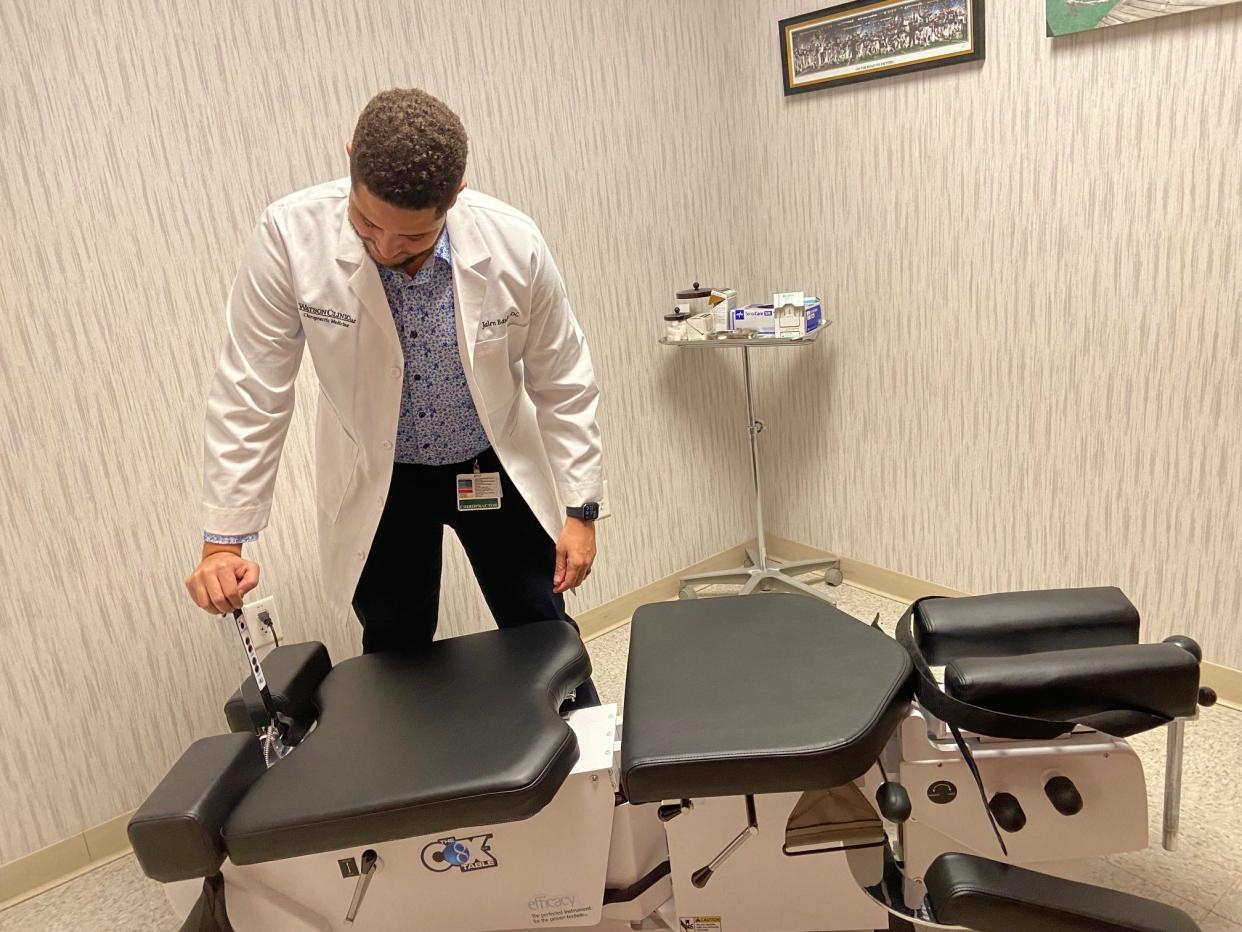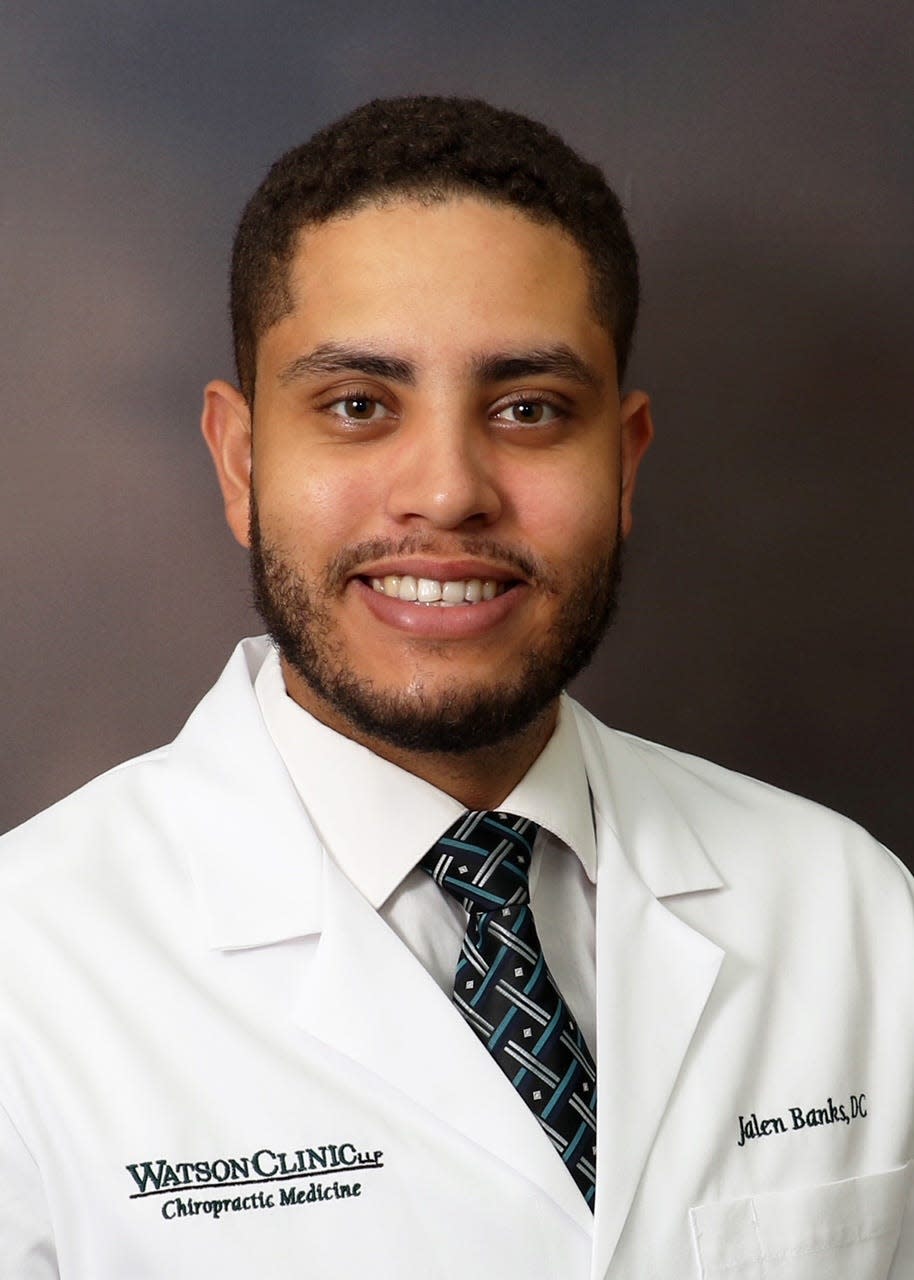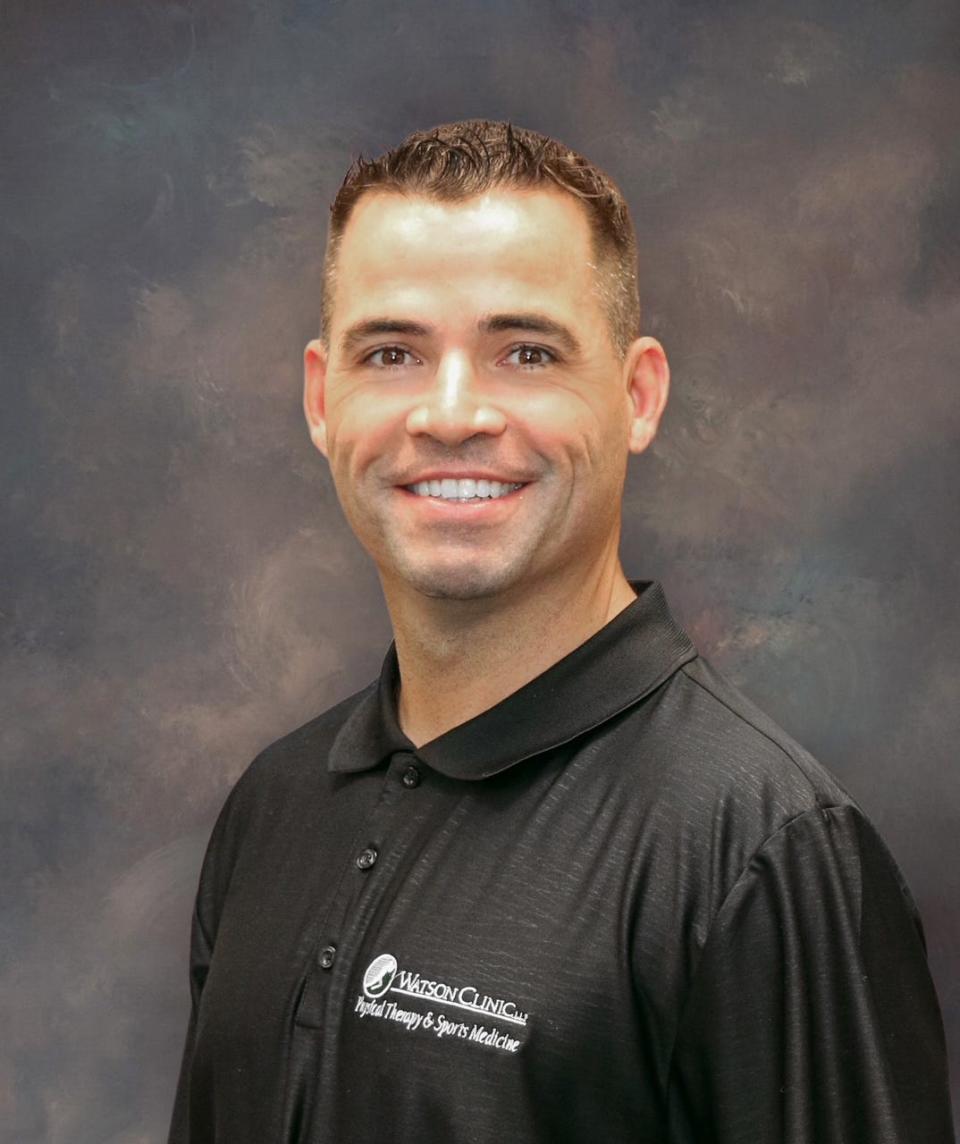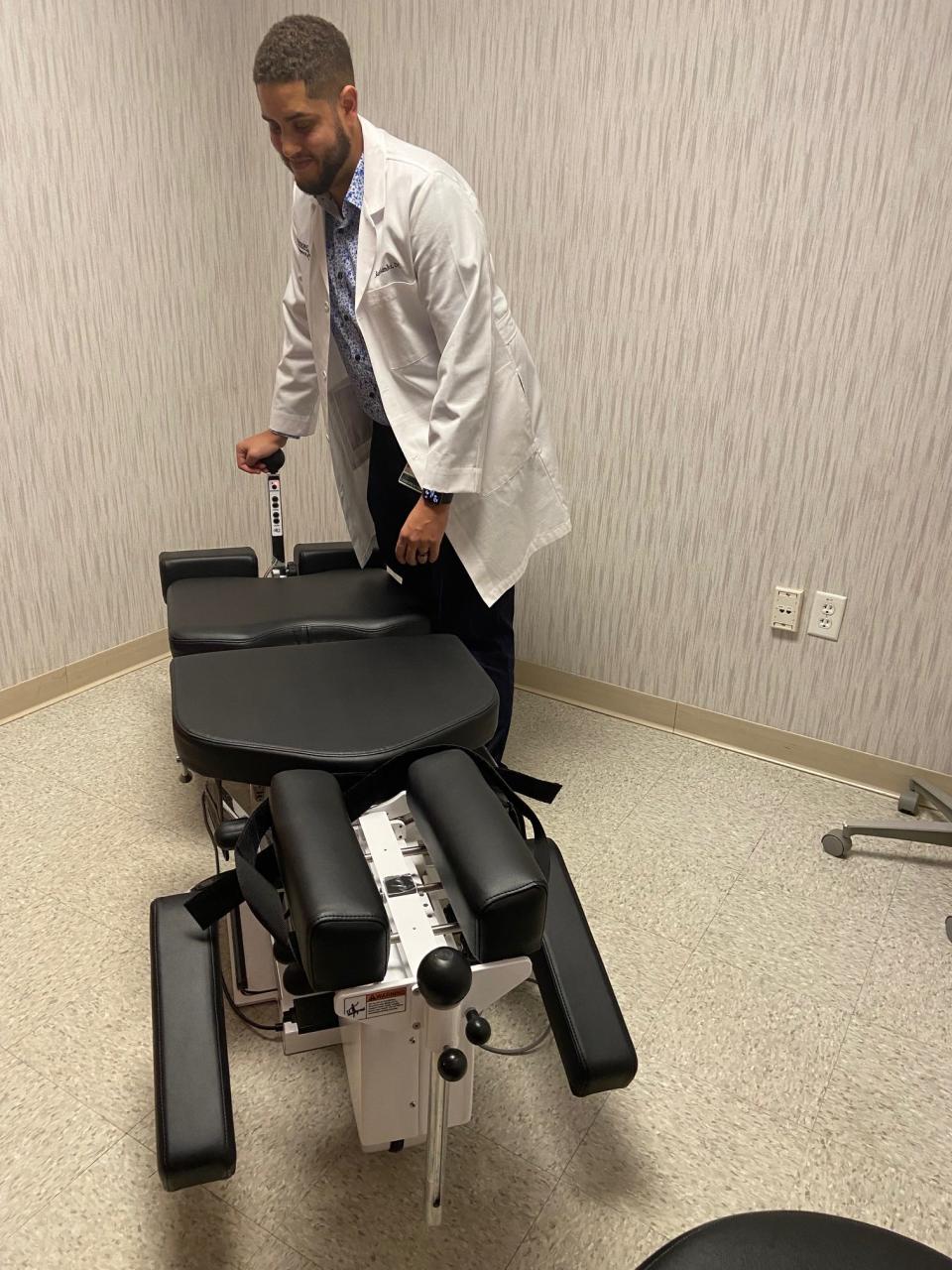Chiropractic care is slowly gaining acceptance from medical doctors as collaboration grows

The featured doctor at a recent program on non-surgical treatments for low back pain is breaking new ground at Watson Clinic.
Jalen Banks is the first chiropractor at the clinic, a potentially game-changing move for the large multi-specialty group of medical and osteopathic physicians.
“I’m starting my chiropractic practice with Watson Clinic because I believe in their vision of an entire health team available to patients under one umbrella,” said Banks, adding that his chiropractic medicine training at Kaiser University prepared him for this role.
“Our curriculum was tailored toward integrative medicine and communicating at the same level of MDs and DOs, with the best interests of our mutual patients in mind,” he said.

Chiropractic care has become increasingly evidence-based, as traditional medical care has, Banks added.
Watson Clinic began thinking about adding chiropractic care after opening its center for specialized rehabilitation in 2016, said Jack Ryals, the clinic’s physical therapy service line coordinator.
Got lower back pain? The treatment options are almost as varied as the causes
Moms with MonitorsHealth department offers blood-pressure monitors to at-risk moms
Just normal aging?Maybe not. Forgetfulness could be a sign of mild cognitive impairment
“One of the areas that we wanted to explore was the treatment of spinal pain,” Ryals said. “We believed we could add one more piece to the puzzle alongside our experts in orthopedics, rheumatology, pain management, acupuncture and physical therapy.”
Banks, 29, originally intended to go into physical therapy. He switched to chiropractic after that form of treatment helped him recover from a back injury from deadlifting heavy weight in high school.
Two chiropractors, two different experiences
This isn’t the first local alliance of medical and chiropractic.
Dane Parker, a chiropractor, opened Parker Chiropractic Center in the late 1980s. About 1990, he said, it became Lakeland Spine Center in collaboration with anesthesiologists and orthopedists.
He soon went with a more conservative option to get to patients before serious interventions were needed. He ventured into additional primary care — pediatrics, adult medicine and urgent care — which collaborated with the spine center. Owl Now and Trinity Medical Center are visible examples.
That may not seem like a big deal, but to put it in perspective, a federal judge had ruled in 1987 that the American Medical Association conspired to destroy the chiropractic association by efforts to keep chiropractors from associating with medical doctors.
AMA disputed that ruling, but distrust was clear.
Parker himself blended the differing professions by becoming a registered nurse and then an advanced practice nurse practitioner. He said this let him offer a broader range of care in clinics he owned.
Those businesses went under the ownership of InnovaCare, a national company, almost two years ago.
Parker, 62, now is president of one of its divisions, InnovaCare Health Partners. He oversees 42 clinics in Florida and nine out of state.
Although only his original clinics have chiropractic care, he said, adding this service at others is “high on his to-do list.”
While Parker readily crossed boundaries, Watson Clinic maintained a conservative business approach that let it grow steadily.
If staid Watson Clinic now is willing to test the waters this way, what does that say about the future of integrative medicine, which combines treatments from alternative and conventional medicine?
It’s an indication of chiropractic medicine’s gradually increasing acceptance by medical doctors, even though these formal collaborations still aren’t commonplace within health care delivery systems.
Motivation for Change
Concern about increasing prescriptions for pain medication is one factor in traditional medicine’s willingness to look for alternatives, as are reports from patients who got pain relief from chiropractors.
Congress, responding to veterans’ demands, authorized the Veterans Administration in 1999 to start providing chiropractic care.
Since 2004, the VA said on its website, it provides these services to all eligible veterans. Its chiropractic doctors diagnose and manage non-operative neuromuscular and musculoskeletal conditions, which most commonly include problems in the low back, neck and other joints.
Positive reports from the VA led some major medical clinics to take notice.
“Cleveland Clinic in Ohio was one of the first large medical groups to incorporate chiropractic care and they now have a team of six chiropractic providers,” Ryals said. “We hope to be as successful.”

Parker said having a chiropractor at Watson Clinic will help its patients and their doctors.
“Every primary care physician should have the benefit of offering chiropractic,” he said.
Without that option readily available, he said, primary care doctors are more likely to rely on long-term medication or refer to a specialist for surgery or procedures such as injections and nerve blocks.
Banks also is certified in acupuncture, according to the state license website. He said he is a certified chiropractic sports physician.
“The advantage of having an integrated medical team is, if a condition is out of my scope of practice, I can co-manage care with a doctor or specialist that is a better fit for my patient,” Banks said.
Banks emphasized an evidence-based approach and the evolving nature of chiropractic technology during his February program.
He highlighted the Cox Flexion Distraction Table, used for a doctor-guided traction technique that allows movement in different directions and joint planes for the neck and lower back. It’s done to alleviate tension of the spinal nerve roots, Banks said, adding that the table also allows for traditional chiropractic manipulation.

Medicare only covers manipulation of spinal joints for chiropractic care, Banks said, but other therapies and soft-tissue procedures like cupping are available for $25. Cupping, also done by some massage therapists, uses heated cups to draw blood to the treatment area.
Robin Williams Adams can be reached at robinwadams99@yahoo.com.
This article originally appeared on The Ledger: Collaboration between chiropractors and medical doctors is growing

